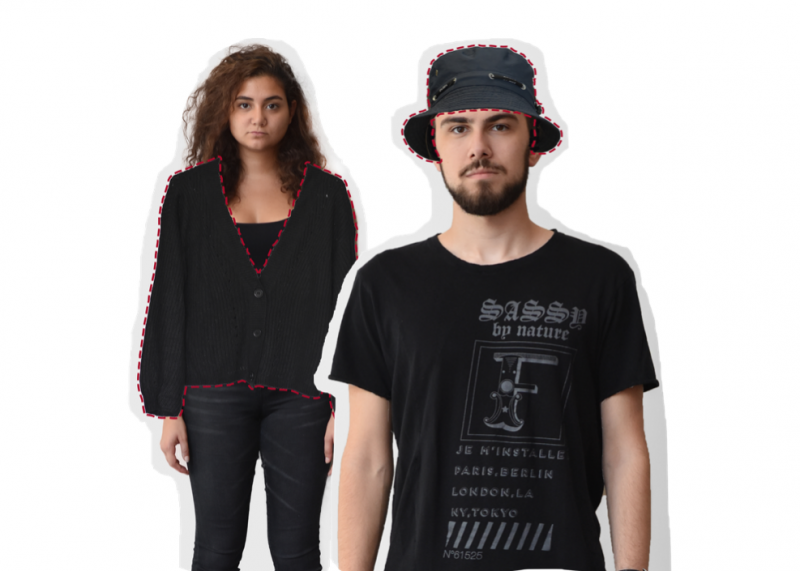As the temperature drops, and with fall officially beginning next week, you may be itching to purchase some new pieces. But with so many trends, how do you choose the right ones? Luckily, we have a guide to the hottest fall trends that anyone can wear and the designers they’re inspired by.
Zebra Is The New Leopard
Seen on the runways of Saint Laurent, Coach, and Proenza Schouler, compared to classic leopard, zebra print is a way cooler print to play around with your fall style. Though it can run the risk of looking tacky, if styled carefully and worn in the right colours, it can look really chic.
If you’re looking for a zebra-printed item that doesn’t scream “zebra print,” avoid black and white. This colourway is high contrast and commands a lot of attention. So to soften up the print, go for zebra that’s camel-coloured or dark beige with black stripes.
Monochrome
Featured in the collections of 3.1 Philip Lim, Nina Ricci, and Brandon Maxwell, monochrome has proven to be a very popular trend. This is no surprise given that it flatters everyone. Wearing a single colour all throughout an outfit elongates and leans out the body, because the eye is not drawn to look to one specific point.
Try experimenting with different neutral-toned outfits. Shades like camel, navy, and creams look really luxe and expensive, especially when worn from head to toe. If you’re not afraid of colour, go for deep purple or even forest green monochrome looks.
Square-Toed Boots
Featured on the Fall 2019 runway collections of Proenza Schouler, Chloe, and Maison Margiela, square-toed boots are a fresh new take on the must-have basic boot in everyone’s fall wardrobes.
Incorporating a pair of square-toed boots will instantly give your outfit an updated look to the 70s style. Also, square-toed boots are the perfect complement to an already androgynous-looking outfit, as the blunt, angular shape of the boot is almost reminiscent of the shape of men’s square-toed dress shoes.
Cardigans
We saw the reintegration of cardigans into the fashion trend cycle last season, and designers like Coach, Chanel, and Max Mara incorporated oversized, chunky-knit cardigans in their Fall 2019 collections.
This “grandpa-chic” style of cardigan is still in style but has also evolved to include cropped silhouettes made in thinner knits. Cardigans are a key piece to have in your fall wardrobe for a few reasons: not only are they practical and provide warmth, but they’re also great for layering, which is one of the easiest styling tricks to adding depth and dimension to any outfit.
Statement Shoulders
From jumpsuits to dresses, blouses, and blazers, statement shoulders have been spotted in the shows of designers like Ulla Johnson, Isabel Marant, and Alexander McQueen. While this trend has reached the fall season with full force, it has slowly been building momentum for the past six months.
Incorporating the statement shoulder trend is one of the simplest ways to add drama to an outfit while applying minimal effort. The best and easiest piece to use is a blazer with volume and padding at the shoulders. This will broaden your upper body, giving you a cool, oversized look that will flatter anyone who wears it.
Bucket Hats
Thanks to major design house Christian Dior, who heavily featured this trend in their Fall 2019 runway show, the concept of the bucket hat was completely renewed.
Maintaining the traditional shape and style of the bucket hat, Dior swapped out the cotton or canvas material traditionally used and, instead, opted for alternative materials like leather, plaid, denim, and other textured and printed fabrics.
Bucket hats are the perfect option if you’re looking for an alternative to a beanie but with a little flare. They’re also great because they can pretty much be styled with any outfit, as long as the fabric complements whatever tone you’re setting for your look.
Leather
Designers like Ferragamo, N°21, and Hermes are some of the many that have featured leather pieces or entire leather looks in their Fall 2019 collections.
From black button-up shirts to matching sunset-orange-coloured sets, designers are doing leather differently. They’re going beyond the idea of the classic biker jacket and are really pushing the boundaries when it comes to utilizing this material.
If you want to try out the trend but still want to play it safe, opt for a pair of black faux leather pants. The timeless colour makes them easy to style while maintaining the textural element of leather that will really elevate any fall look.
Plaid
Plaid is making a major return to fashion, with brands like Vivienne Westwood, Christian Dior, and Oscar de la Renta all featuring this trend.
Not only are we seeing plaid, but the options are much more diverse. From tartan to gingham, Prince of Wales check, and other variations like houndstooth, plaid is being designed in limitless colour combinations and different pieces like dresses, trench coats, and midi skirts.
When picking out a plaid piece, invest in a neutral-coloured one with an accent colour running through. The single colour will give you styling flexibility while still allowing your outfit to stand out.
Even though many of these pieces are considered trendy, they’re bound to stick around for many upcoming seasons. So make sure you keep them in your closet, ready for Fall 2020.
Photos by Laurence B.D.
